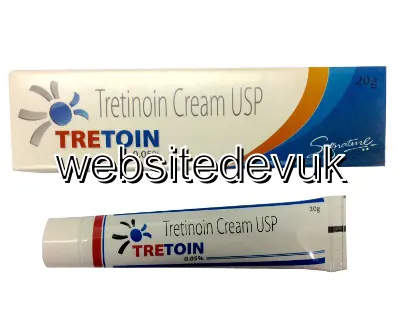Buy Tretinoin UK
| Package | Dosage | Price | Price per Dose | |
|---|---|---|---|---|
| Dosage: 0.1% | ||||
| 5 tube | 0.1% | £97.68 | £19.54 | |
| 4 tube | 0.1% | £85.96 | £21.49 | |
| 3 tube | 0.1% | £76.19 | £25.40 | |
| 2 tube | 0.1% | £56.65 | £28.33 | |
| 1 tube | 0.1% | £34.18 | £34.18 | |

Tretinoin Description
Introduction to Tretinoin
Tretinoin is a well-known medication frequently used in dermatology for the treatment of acne and other skin conditions. It is a derivative of vitamin A, classified as a retinoid, which plays a vital role in skin cell renewal and repair. Due to its effectiveness, tretinoin has become a popular choice for individuals seeking to improve their skin texture and appearance. This substance works by promoting the shedding of old, dead skin cells and stimulating the growth of new, healthy cells. This process helps to clear acne lesions, reduce blackheads, and fade post-inflammatory hyperpigmentation.
Application and Usage
Typically, tretinoin is available in various forms such as creams, gels, or solutions, allowing users to choose products that best suit their skin type. Application usually involves applying a thin layer of the medication once daily, preferably at night, to clean, dry skin. It is important to follow the instructions provided by a healthcare professional or the product label. Regular use over several weeks is often necessary before visible improvements are noticeable. During treatment, users should avoid excessive sun exposure and use sun protection measures to prevent skin irritation and photosensitivity, as tretinoin can make the skin more sensitive to UV rays.
Benefits and Effectiveness
Many users report significant improvements in their skin condition after consistent use of tretinoin. The medication helps to reduce the formation of new acne lesions, decrease inflammation, and accelerate the healing of existing pimples. Over time, tretinoin can also lead to a smoother skin texture, finer pores, and a more even skin tone. Furthermore, it is sometimes prescribed to treat fine lines and early signs of skin aging, thanks to its ability to stimulate collagen production. Patients often find that tretinoin enhances overall skin radiance and health, making it a versatile option for various skin concerns.
Possible Side Effects and Precautions
Despite its benefits, tretinoin can cause side effects, especially when first starting treatment. Common issues include skin redness, peeling, dryness, and a sensation of burning or stinging. These reactions are usually temporary and tend to lessen with continued use. To minimize irritation, it is advisable to start with a lower concentration and gradually increase as tolerated. People with sensitive skin or skin conditions should consult a healthcare provider before using tretinoin. It is also crucial to avoid combining tretinoin with harsh skincare products, such as astringents or exfoliants, which can exacerbate irritation. During treatment, sun protection is essential, and pregnant or breastfeeding women should avoid using tretinoin unless directed by a doctor, due to potential risks.
Conclusion
Tretinoin remains one of the most effective topical medications for acne management and skin rejuvenation. Its ability to promote cellular turnover and improve skin texture makes it a staple in dermatological treatments. While it requires consistency and proper precautions, many users experience notable enhancements in their skin’s appearance over time. As with any medication, consulting with a healthcare professional ensures safe and optimal use tailored to individual skin needs. Overall, tretinoin is a valuable tool for those looking to achieve healthier, clearer, and more youthful skin.
See Also

